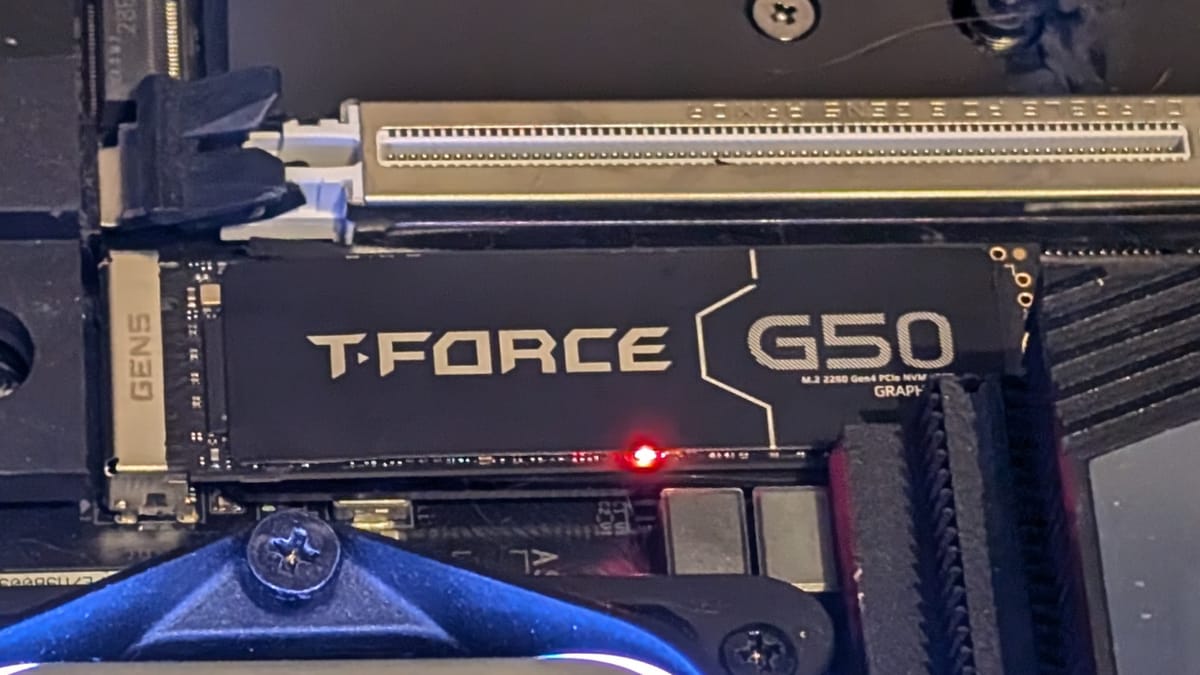
If you’ve been in the technology space for a while, you begin to see a pattern emerge with just about any piece of gear. The flagship and fastest pieces of equipment come out first, then as things optimize you see a second generation that typically focuses more on value at the cost of a small amount of performance. We’ve reviewed the two flagship NVMe drives from Teamgroup, the G70 and A440 Pro, and found that they hold up remarkably well with a solid controller and plenty of memory under the hood. The T-Force G50 represents that second generation, with a focus on reliability and affordability. The only way to find out if those cost-saving trade-offs are a bridge too far or not is to get it in the lab. Let’s check out the 2TB Teamgroup T-Force G50 NVMe SSD.
Before we get it loaded up for testing, let’s get under the hood. The T-Force G50 is a 2280 M.2 (that’s 22mm wide and 80mm long, if you ever wondered what that designation means), and is an NVMe SSD. (NVMe means nonvolatile memory express, since we’re demystifying) It utilizes the PCIe 4.0 x4 slots (A motherboard has a certain amount of lanes to address the 4th-generation PCIe slots, and this storage medium will require four of those lanes), and is loaded with between 512 GB and 2TB 176-layer 3D TLC NAND Flash memory chips. The G50 uses the Innogrit “IG5220BAA” controller with a 12nm FinFET CMOS process and supports capacities of up to 4 TB. Now what does all that mean?
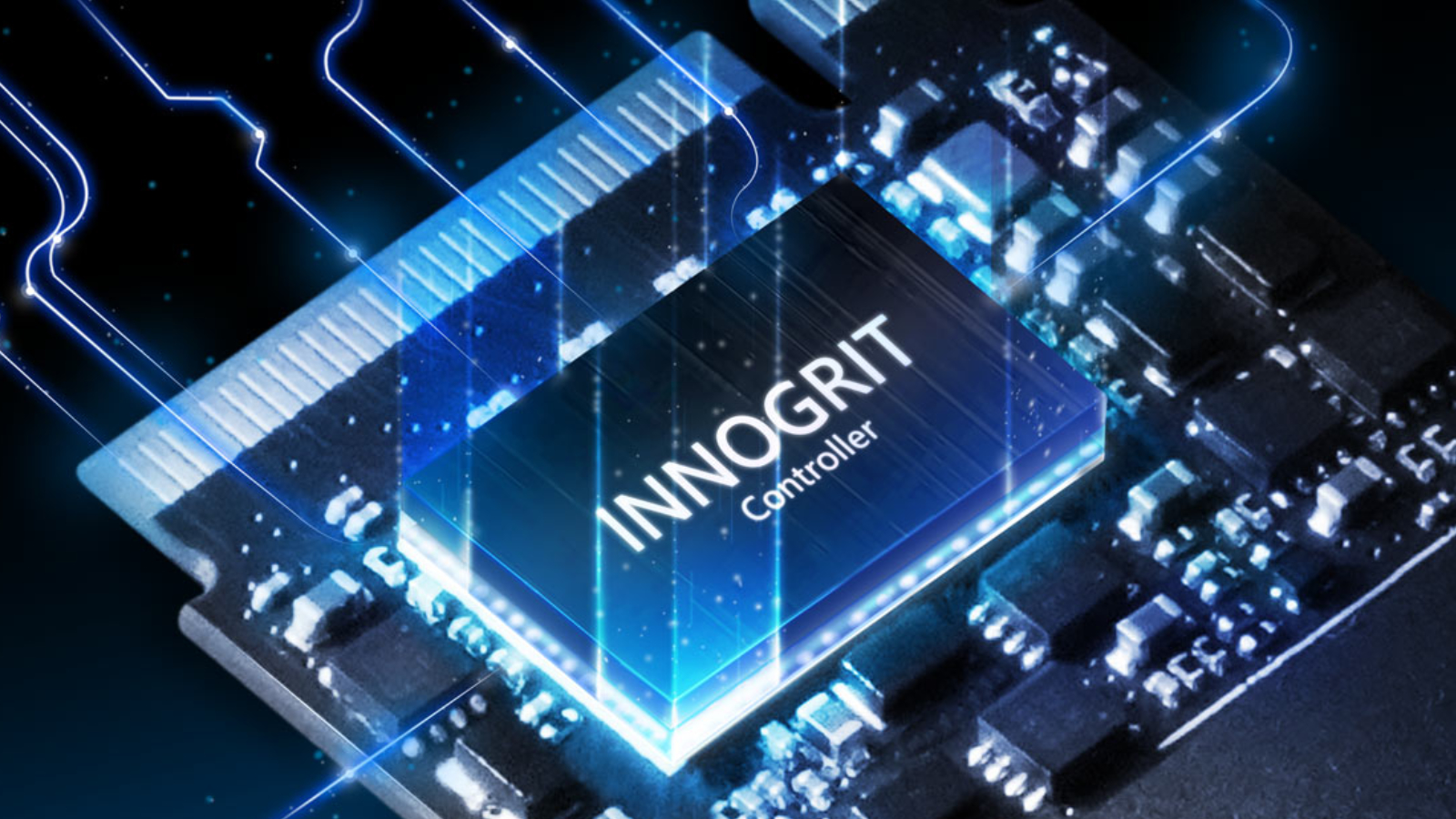
Boiling it down to the basics, it’s a NVMe solid state drive with capacities in either 1TB or 2TB capacities that’ll fit just about any modern motherboard. The particular controller chosen uses a DRAM-less design, meaning it’ll use the system’s memory instead of putting DRAM memory on the device. This technique, dubbed HMB or host memory buffer, has improved dramatically since it first debuted. Earlier versions of the technology saw performance fall off of a cliff rather quickly, resulting in drives with low prices but even lower speeds. This particular model ships with a graphene heat dissipation plate that you can attach without adding any meaningful height to the chip, allowing it to be underneath your motherboard’s cooling plate, if it has one.
On the box, Teamgroup has claimed that the device is capable of 5000 MB/s sequential read and 4500 MB/s sequential write. Based on the previous drives we’ve reviewed from this team, I have no doubt it will, but it’s best to verify – let’s do that.
We are big fans of using a variety of testing tools to determine overall performance for drives. As such, we lean on CrystalDiskMark, ATTO, 3DMark, and others. We also run all of these utilities multiple times, and empty, half full, and nearly full to ensure we are getting consistent behaviors. There are a lot of theories that NVMe drives benchmark differently based on the amount of data stored, with the empty and full states being the most divergent. Well, I’m happy to report that NVMe drives have improved dramatically over the past few years. The slowdown was a consequence of overprovisioning – a practice that reputable manufacturers have either stopped or drastically reduced at this point. To test this out I checked empty, at 25%, 50%, and nearly full.
One of the first tests I like to run is CrystalDiskMark as it gives me a look at seeing if the drive can hit the theoretical maximums.
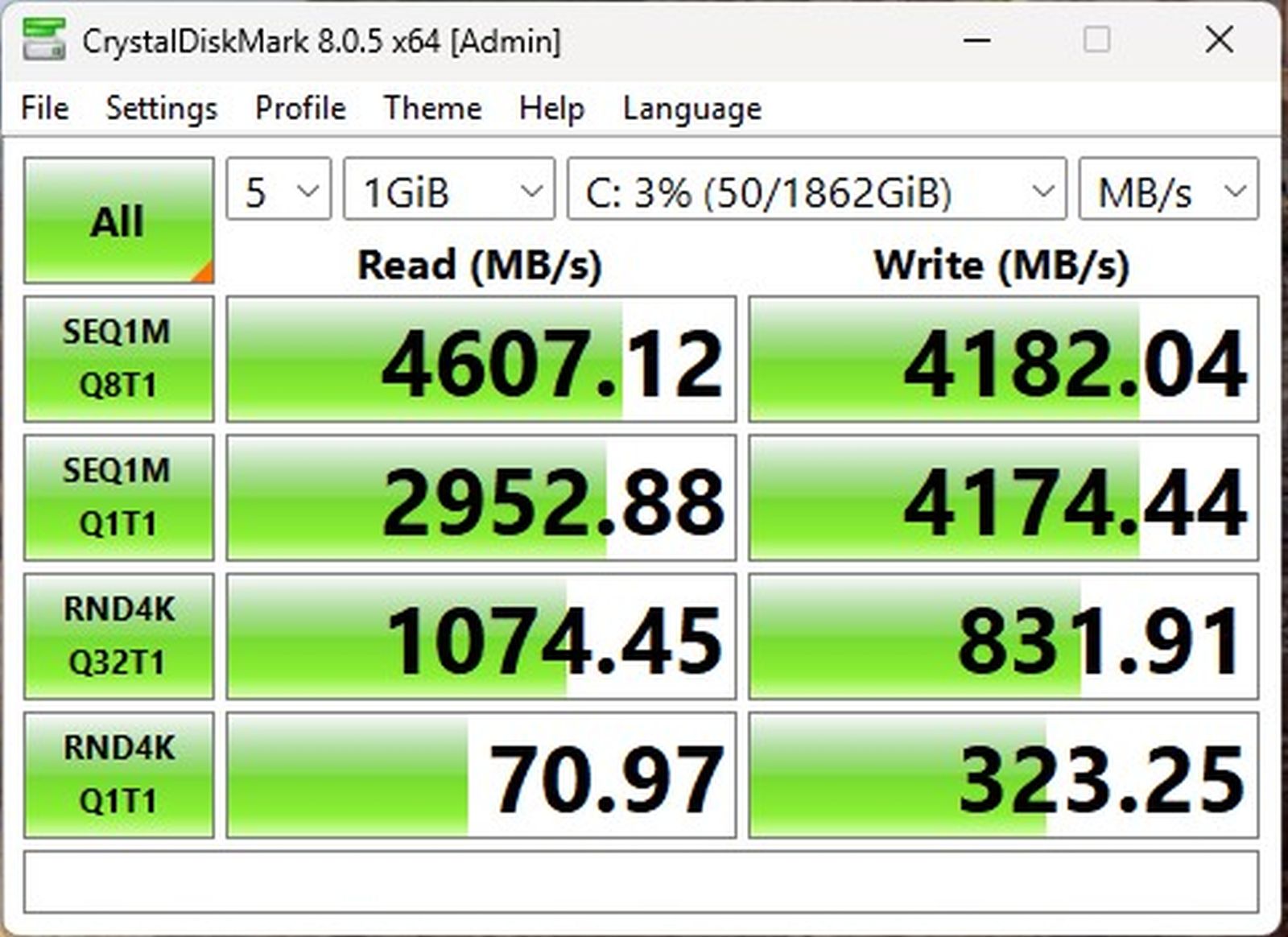
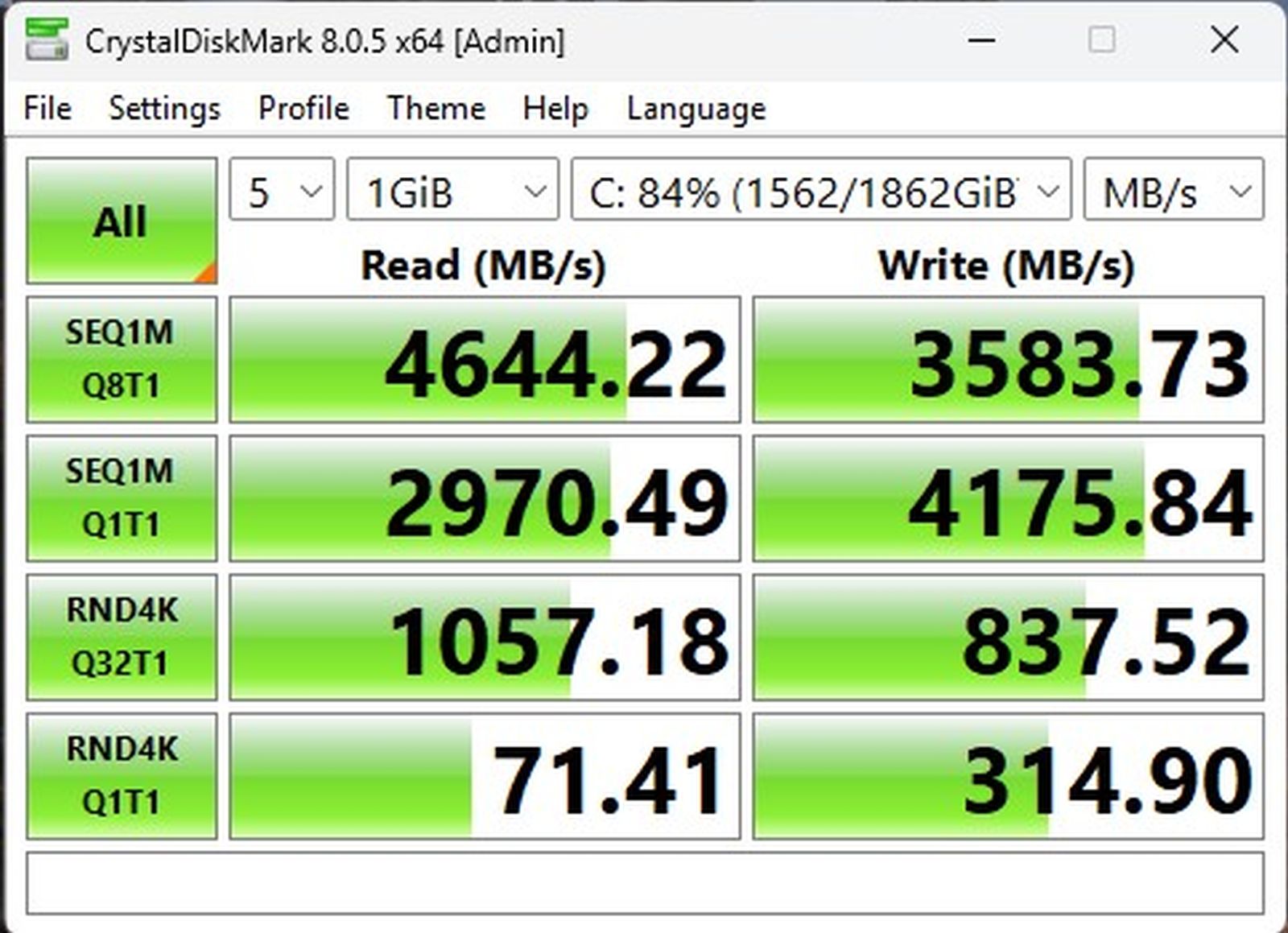
We do see a slight dropoff between the drive being completely empty and completely full. The drive is solidly around 4600 MB/s for read speeds, but we see a drop from around 4200 to 3600 MB/s. Given that the data was written in an unnatural way (large chunks written at all once), it’s likely that it has caused data fragmentation. SSDs are designed to not allow this to occur, but it’s the only thing I could come up with. To debunk that would take thousands of hours of normal use to cause those blocks to be overwritten, so I’m not able to confirm more than the behavior along with my hunch.
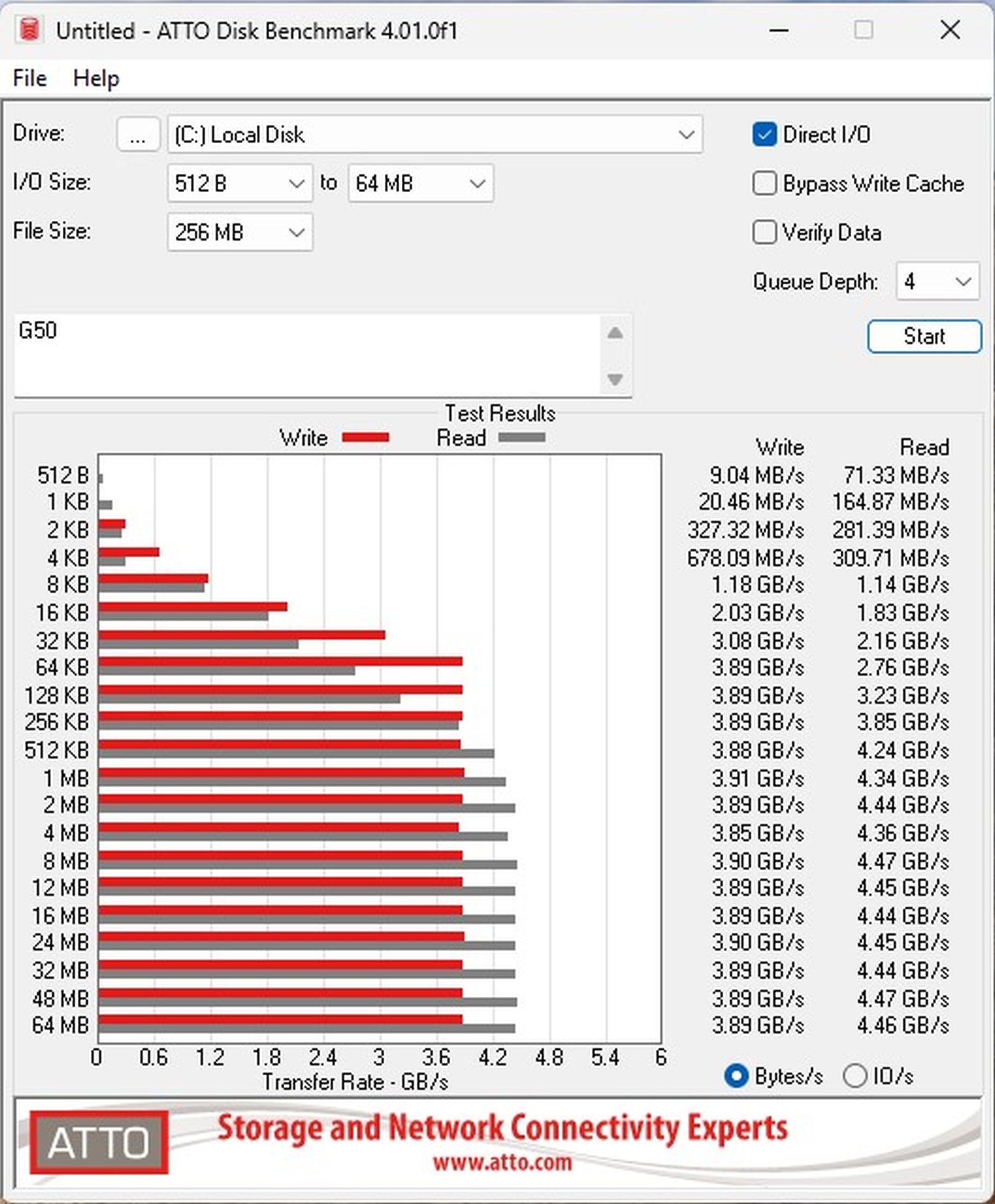
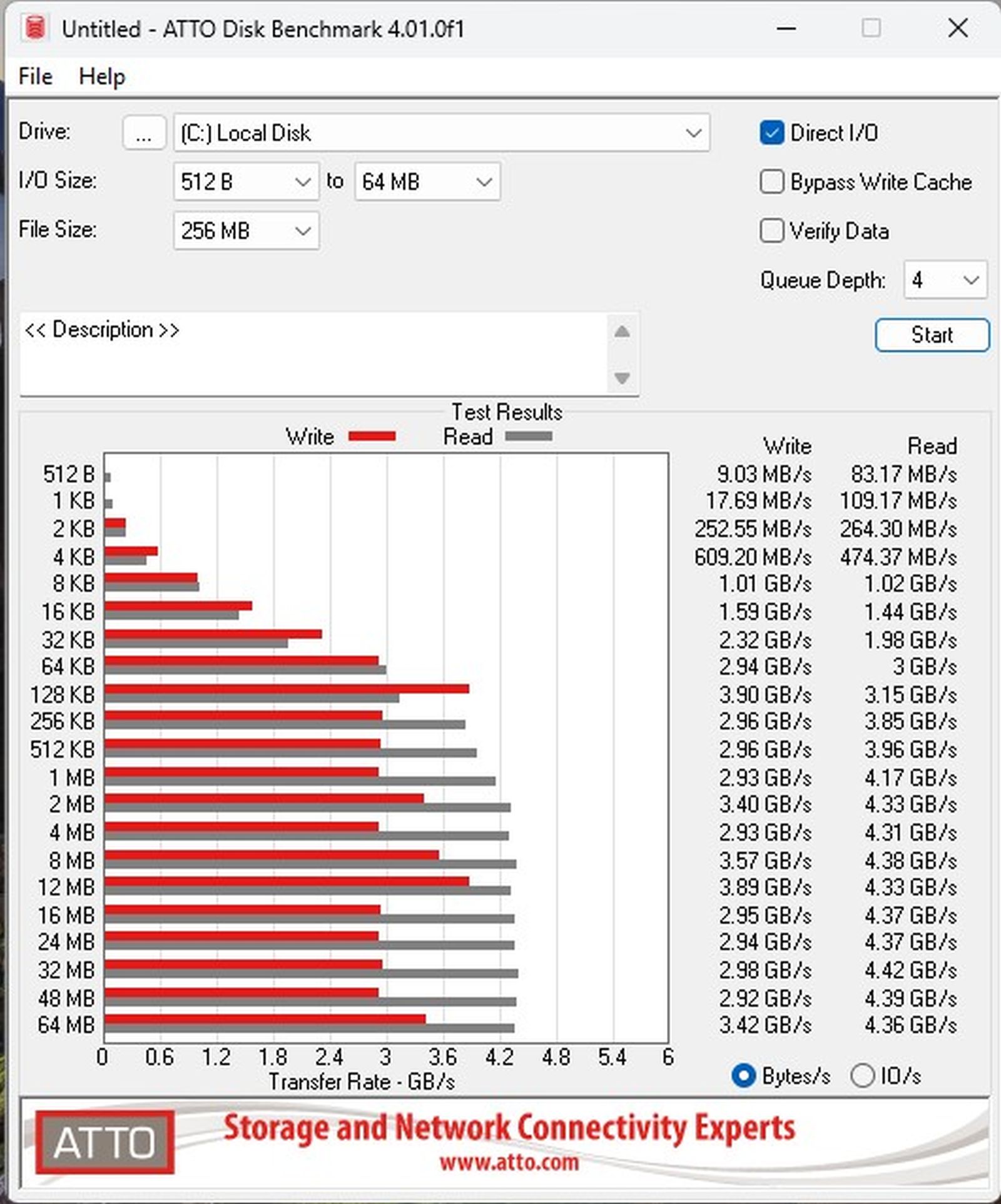
We see this same behavior in ATTO where there are very consistent read and write speeds within the expected spec, and then we see the same dropoff with the drive full. The good news is that ATTO gives us a more longitudinal look at the drive’s performance. The up and down nature of the performance on various block sizes all but confirms my theory.
I also like to use 3DMark to look at the performance of the drive as it gives some real-world performance metrics to compare. The games that are in 3DMark could use an upgrade with Battlefield V, Call of Duty: Black Ops 4, and Overwatch being the games being tested, but they do offer a window into performance. SSD-optimized Battlefield V loads at nearly a gig per second, meaning load times should be around two seconds or less for a level. Overwatch, launched in 2016, was built to run off of spinning platters, and is thus not built in a way to best take advantage of the faster speed offered by an NVMe SSD. Still, we see Overwatch loading at a speed that should have levels loading in around 3 seconds — far faster than is needed as you’ll undoubtedly be waiting for your counterparts. I was also happy to see that the response times are nice and fast, with no particular title-breaking 100 milliseconds.
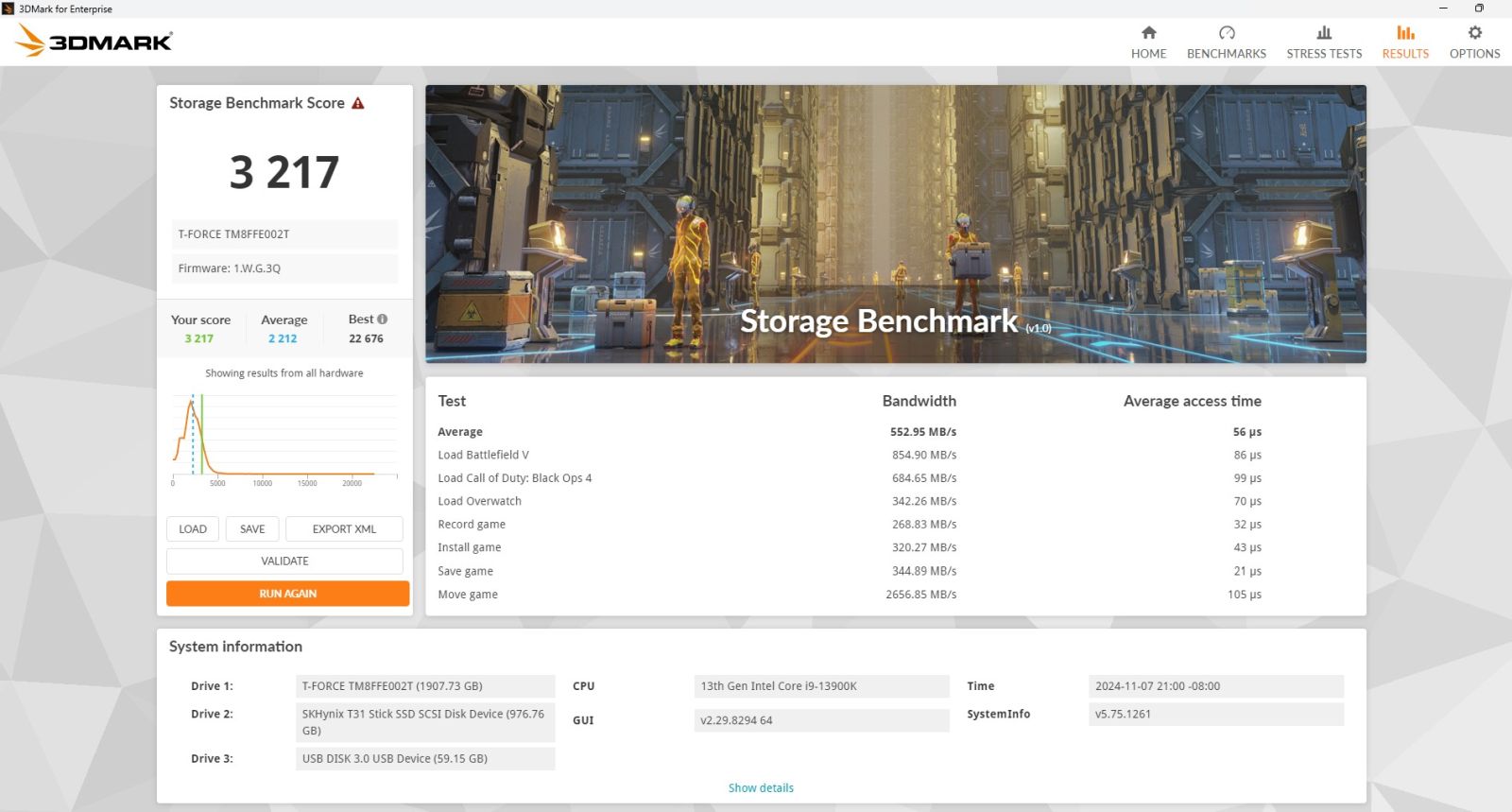
What I don’t see in the 3DMark test is any evidence of the slowdown in speed when the drive is close to full. Perhaps the real-world nature of the test obfuscates it as it installs a sort of virtual version of the game to load, making it a more natural storage than the chunked-up copies I had done to fill the drive.
With these minor concessions on speed, pricing at a value was the target for Teamgroup with the T-Force G50. The G50 is available in the US in 1TB and 2TB capacities. At the time of writing the T1 is listed at just $57.99, 2TB is $117.99, and both come with a five-year warranty. These prices put them head to head with big names like Crucial, but buyer beware — most of these drives from companies you’ve heard of are slower, offering speeds of up to 3,500 MB/s — something this drive puts to shame at the same price or less.
From the tests I’d completed, the G50 is an excellent desktop drive, but there’s one other use case that might not be immediately obvious – small form factor devices. If you are building a Raspberry Pi device, filling a cache on a NAS, or putting this drive in a laptop, you’ll have a secondary concern – power usage. By my measurements, this drive pulls just over 2 watts of power, and almost nothing while idle. This makes it perfect for those platforms.
T-Force G50 NVMe SSD
Excellent
The G50 delivers very respectable speeds for just about any modern PC, though you’ll want to jump up to something like the G70 if you’ve got a board capable of higher speeds. That said, it’s easily the best for small form factor systems, and the price is impossible to beat.
Pros
- Speeds within reasonable margin of advertised
- Included graphene cools without adding bulk
- Very low power usage, perfect for small form factor
- Fantastic pricing!
Cons
- HMB design exhausts cache faster
- Might be better to buy a G70 and “grow into it”
